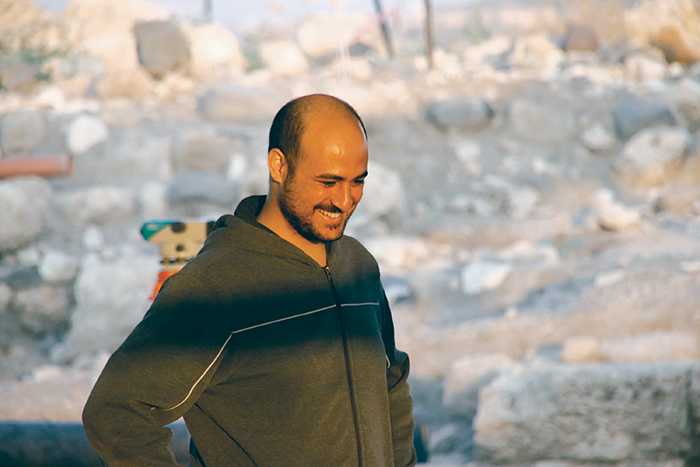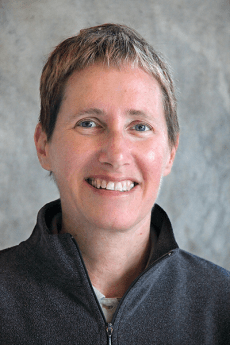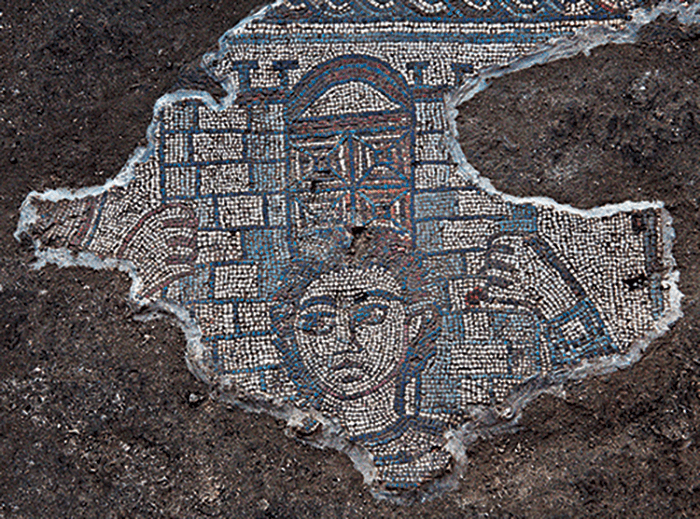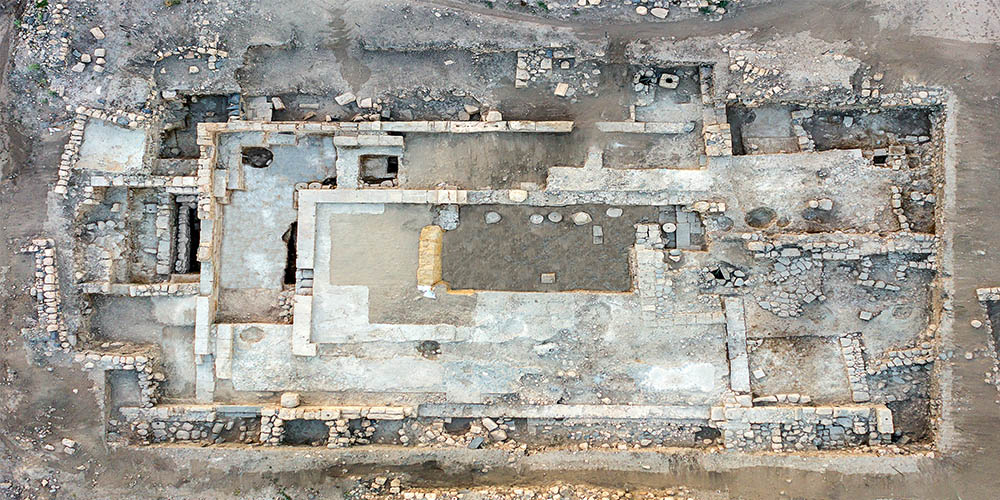Excavations of an ancient synagogue at Huqoq, Israel
Buried inside an unassuming hill in Israel’s Lower Galilee is a magnificent ancient synagogue with splendid mosaic panels that have been hidden away for over 1,400 years. Dr Dennis Mizzi writes about the project that is bringing them to light.
Huqoq is an unimpressive place for most. But the agricultural village has held its own since biblical times, some saying it was nestled at the very heart of Jesus’s Galilean ministry. In 2011, Prof. Jodi Magness (University of North Carolina at Chapel Hill) set her sights on the village for excavation. The visible remains scattered among the surface rubble, the accessibility of the site, and the fact that it had never yet been excavated made this a prime location. But when the digging started and long-lost treasures were unearthed—intricate mosaics, pottery, coins—a slew of crucial questions also arose. Questions that would revolutionise the study of ancient Judaism and of Jewish-Christian relations in antiquity. Originally, our team set out to answer a humble, but highly loaded, question: when did monumental synagogues of the so-called ‘Galilean’ type emerge in Palestine? Traditionally, synagogue buildings were divided into three major architectural types, with ‘Galilean’ synagogues considered to be the oldest. Boasting a basilica plan with three aisles and a nave, these types of structures were often classified by experts as dating back to the second and third centuries CE. Architectural parallels with Roman temples in Syria and Asia Minor reinforced this notion. But hard evidence on the ground suggests otherwise.
Time and again project director Magness has called for a revision of synagogue chronology, but deeply entrenched ideas are hard to let go of in the highly contentious field of biblical archaeology.
In this specific case, the challenge to traditional chronology has serious ramifications for the understanding of Jewish-Christian relations in late antiquity. The excavations at Huqoq sought to shed light on this issue of chronology—but then, the discovery of mosaics gave the project a new dimension altogether.
The site
Huqoq’s story starts several millennia ago. Archaeology and literary sources show that the site was inhabited as early as the Bronze Age, with subsequent occupations in the Iron Age, the Persian, Hellenistic, Roman, Byzantine, Islamic, Medieval, and Ottoman periods, as well as during the British Mandate of Palestine.
The synagogue itself was buried under 1,400 years of history—literally! The building was abandoned, but it is unclear when this happened or why. But while it lay derelict, life in the adjacent village at Huqoq—parts of which have been exposed in our excavations—went on. Then, between the twelfth and thirteenth century, a large monumental building was constructed a metre above the synagogue, reusing some of its walls. This building fell into disuse over centuries until eventually, a thick layer of fill accumulated across the entire area, burying the building. In the eighteenth and nineteenth centuries, the resultant open space was used for cooking, and it was characterised by numerous tabuns (bread ovens) and fills of ash. This occupation layer was sealed by the modern village of Yakuk, which was established in the late nineteenth and early twentieth century, destroyed by fire in 1948, and then bulldozed in the 1960s. In the early 2000s, the mound of rubble from the demolished village was the most distinguishable feature on the surface.

But, readers may ask, how did we know that there was an ancient synagogue of the Galilean type here? Partly, this was deduced from the scattered architectural remains on the surface. By the end of the very first season, the team had unearthed a few nicely cut stone blocks which proved to belong to the eastern wall of the synagogue.
Excavations in subsequent years also confirmed Magness’s thesis: despite the fact that the Huqoq synagogue was of the Galilean type, pottery and C-14 dating indicated, in no uncertain terms, that it could not have been constructed before the fifth century.
And then, there were the mosaics…

The discovery of mosaics was unexpected, albeit not completely surprising. We knew that the synagogue was paved with a mosaic floor because of the hundreds of loose tesserae collected as we were going down. But finding loose tesserae is never a good thing! It means that the floor they belonged to has been heavily damaged, if not completely destroyed. So it was rather exhilarating when one fine day in June of 2012, one of the field-school students scraped the hard surface of a mosaic still in situ. Staring straight at him was a face that hadn’t seen the light of day in centuries! Since then, summer after summer, the team has exposed one stunning mosaic after another. In contrast to other sites with similar features, the Huqoq mosaics stand out because of their rich, diverse, and exceptional visual content.
Many of the panels portray episodes (or variations thereof) taken directly from the pages of the Bible, including the story of Noah’s ark (Genesis 6–9), the Tower of Babel (Genesis 11), the drowning of Pharaoh’s soldiers in the Sea of Reeds (Exodus 14–15), the sending of the spies into Canaan (Numbers 13), Jonah and the fish (Jonah 1–2), as well as a representation of the eschatological prophecy in Isaiah 11:6, accompanied by an inscription reading ‘a small child shall lead them.’ These scenes are extremely rare or completely unique in the setting of ancient synagogues. In addition, there is one panel—what we have dubbed the ‘elephant mosaic’—which has now become synonymous with the project owing to its exceptional quality and elusive nature. There is a strong probability that this panel depicts a non-biblical episode, which would be a first for synagogue mosaics.

‘The mosaics decorating the floor of the Huqoq synagogue revolutionise our understanding of Judaism in this period,’ says Magness. ‘Ancient Jewish art is often thought to be aniconic, or lacking images. But these mosaics, colourful and filled with figured scenes, attest to a rich visual culture as well as to the dynamism and diversity of Judaism in the Late Roman and Byzantine periods.’
The Huqoq mosaics also shed light on a vibrant Judaism that was not afraid to borrow ideas and motifs from the surrounding Graeco-Roman culture. As Magness notes, ‘one of the distinguishing features of the Huqoq mosaics is the incorporation of numerous classical (Graeco-Roman) elements such as putti, winged personifications of the seasons, and—in the Jonah scene—harpies (large birds with female heads and torsos representing storm winds).’ There are several indications that the artistic programme was influenced by macro-regional trends, and there are evident links with far away centres such as Antioch. The fact is that Jews borrowed motifs from the Graeco-Roman world and made them their own, much like Christians did when they started to represent Jesus. In the current politically charged climate, where ‘foreignness’ is perceived as a serious threat to European and local identity, this is a stark reminder of the fallacy of cultural purity.
The mosaics also help us unearth long-lost traditions and appreciate the fact that the past comes to us highly filtered. Some of the biblical scenes, for example, depict a variation of the biblical episodes that reach us today, indicating the circulation of supplementary traditions. The panel of Jonah shows him being swallowed not by one, but by three fish! This actually reflects an interpretative tradition which plays creatively with the original Hebrew text. Before Huqoq, the earliest attestation of this tradition was in some Jewish and Islamic medieval manuscripts. Our discovery demonstrates that it was already in circulation in the fifth and sixth centuries, and it was popular enough to find itself depicted on a costly mosaic floor.
In the end, the richness of the mosaic programme and the monumental nature of the synagogue show that the notion of a declining Jewish population suffering under the oppression of Christian rule is inaccurate. Jews actually flourished in the Byzantine period.
The road ahead
Archaeology is a destructive science, and so the responsible practice is usually to leave a substantial part of the site unexcavated, so that future archaeologists with better techniques and technology can test the original results. This was our plan as well. But the mosaics changed everything.
As Magness explains, ‘once we discovered the first mosaics in 2012, it became clear we had to uncover the entire building, as leaving parts unexcavated would have immediately attracted other archaeologists looking for spectacular mosaics, thereby defeating the purpose of leaving it for future generations.’
So far, we have excavated approximately two thirds of the synagogue, and it will take up to three or four more years to complete its exposure. After that, our hope is that the site will be developed for tourism by the Israeli government.
Huqoq serves as a pointed reminder of the colourful nature of society, past and present. Many often assume that Judaism was a monolithic entity in antiquity. This includes scholars, many of whom are influenced by rabbinic texts, which are, of course, biased and selective. But synagogues like the one at Huqoq are recovering alternative Jewish voices and counter narratives. This is why we cannot emphasise enough the importance of our archaeological findings. The site invites us to challenge the notion of monolithic identities, to refute sweeping statements, and to never accept what we are told, or what we read, uncritically.





Comments are closed for this article!